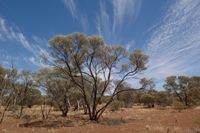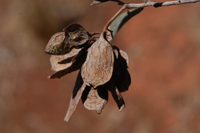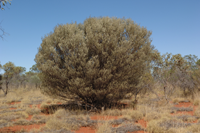Species of the Mulga group, especially A. aneura itself, are notoriously variable, and identification of these taxa, both in the field and from herbarium material, is often very difficult. Understanding this variation and its causal factors, and being able to identify the taxa reliably, are critically important to the effective management, conservation and utilisation of this valuable resource. Two recent revisions of Mulga (Randell 1992; Pedley 2001) have helped clarify some of the taxonomic complexity within the group and have provided aids to identification (for naming species see also Maslin 2001). Very little is known, however, about the genetic basis of this variation, the origin of the different forms of Mulga, or the ecological factors that allow them to coexist in often bewilderingly complex mixed populations. Previous studies have suggested that these patterns of variation are due to a complex mix of sympatry and putative hybridization in the major species (Davies 1976), geographic variation within the species, and sympatric variation within A. aneura itself (Pedley 1973; Lamont and Fox 1981; Fox 1986; Cody 1989). In the light of our own field studies it appears likely that while hybridization is a major factor in creating diversity, there are other genetic mechanisms maintaining this diversity. These mechanisms could include polyploidy and apomixes such as are found in other legume taxa of the arid zone, e.g. the Senna artemisiodes group (Randell 1970), as well as neoteny.
The fundamental question is whether plants of the same morphotypes share immediate common ancestry, irrespective of whether they grow side-by-side or are widely distributed. Furthermore, it is important to understand the genetic relationships among morphotypes, in particular whether morphotypes arise independently within populations through in situ hybridisation events, or whether the morphotype has a more ancient origin from a single area and has spread independently through arid Australia.
Apomixes - asexual seed production
Hybridization - the formation of an individual through the fusion of genes from two different taxa
Neoteny - retention of juvenile features in adult growth phase
Polyploidy - multiple sets of chromosomes
Sympatry - populations or species occupying the same geographical area


